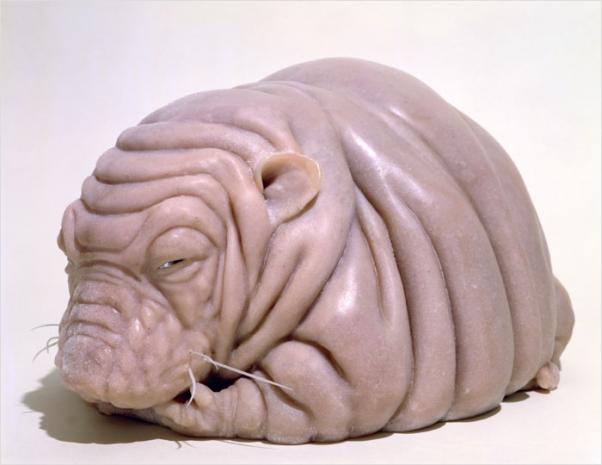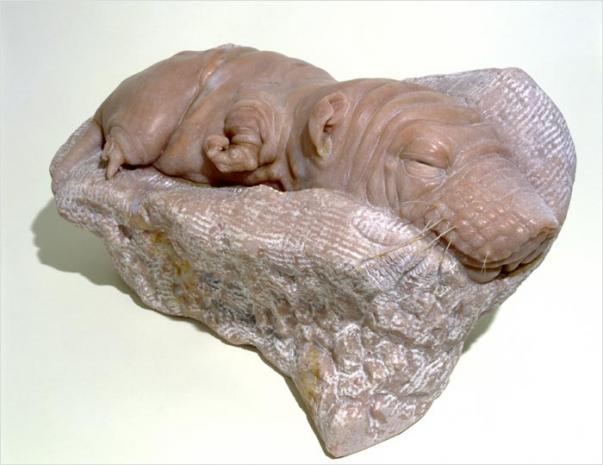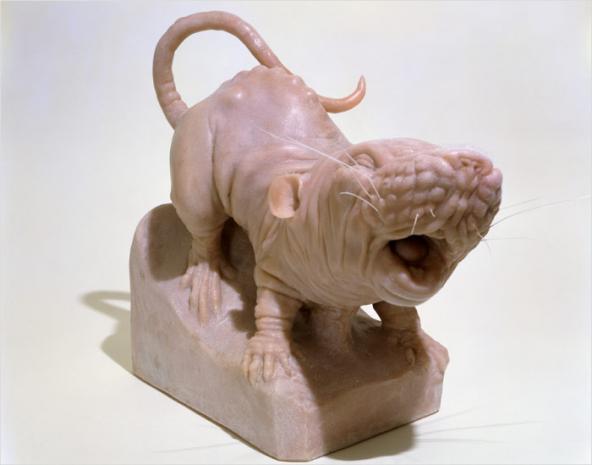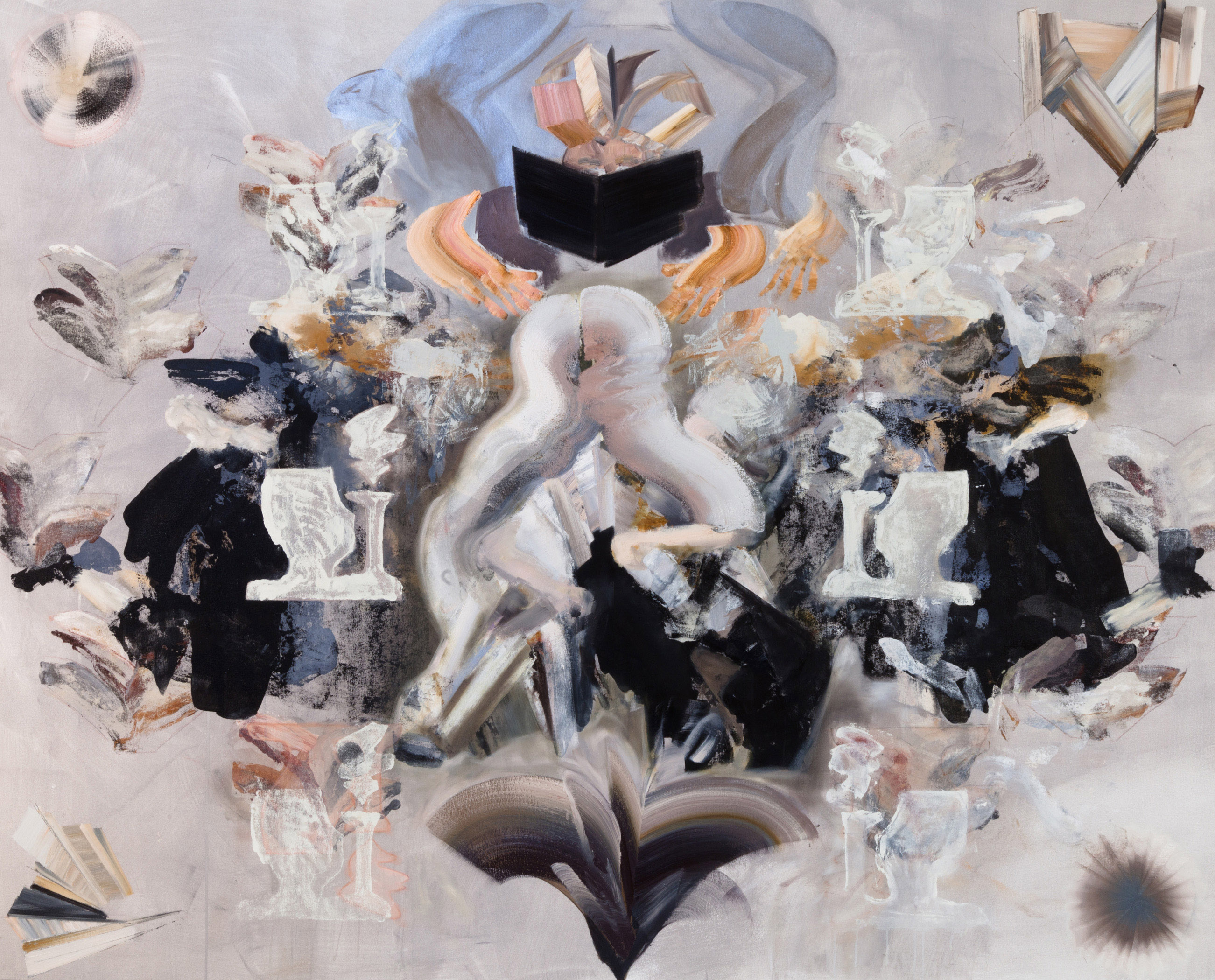By Randy Gladman
Since Pope Gregory the Great first posted the seven deadly sins on the Christian internet in the sixth century, they have been creative fodder for an incredibly diverse group of artists. Dante described them as the chief experience of purgatory in The Divine Comedy. Hieronymus Bosch’s painted version, El Bosco, was kept at El Escorial, the palace of Spain’s King Philip 11, and George Pencz, in the sixteenth century, initiated the use of the figure of woman to symbolize all seven sins. The theme was successfully updated in the twentieth century by artists such as George Balanchine, who choreographed a ballet about the sins that was staged by the New York City Ballet in the l950s, and most recently by David Fincher, whose 1995 film Seven, starring Brad Pitt and Morgan Freeman, scared the bejesus out of audiences.

In his recent exhibition at Lehmann Maupin, “Cultured” (February 20 – March 30, 2002), Bryan Crockett offers seven sculptures of newborn mice to incarnate the deadly sins. Cast from ground marble, the material references the classical history of religious sculpture. These allegorical figures portray actual mice engineered for the study of human disease, but rather than entering the debate over the use of animals in laboratory experiments, these images are used to comment on the centuries-old conflict between religious doctrine and scientific rationality. By cross-pollinating the unfortunate progeny of laboratory experiments with canonical mythology, the artist questions what we have chosen as a substitute for faith in an era of dwindling spirituality.

Using a polymer binder to solidify pink-tinted crystalline marble, Crockett has moved away from the impermanence of his balloon sculpture work like the intestinal Ignis Fatuus, which was one of the hits of the 1997 Whitney Biennial, and his Necrophilia series that comprised his first solo show at Fotouhi Cramer in 1998. Though not as grotesque as these earlier works, a dark, almost gothic, sensibility persists. Highly rendered, these sculptures present repulsive animals (baby mice) in a horrific situation (human experiments) as allegories of the worst human vices, yet their beauty and attraction is undeniable. These works are sublime, contradictory and exquisite.

In the same way that clowns can be humorously joyous yet terrifically frightening, these almost cute infant mice, littered with malignant lumps on their bald skin, are sweet and innocent, yet disturbingly realistic. Gluttony (2001) presents a hugely overweight lab experiment mouse, whose folds of skin resemble nothing so much as rolls of obese human flesh. Fine grains of marble crystal embedded in the highly polished surface of the sculpture sparkle under the gallery lights, and the delicate acrylic fuzz on its snout increases its verisimilitude. Larger than one cubic foot, the aggressive posture of the open-mouthed Anger (2001) is most disturbing when one thinks of the potential size of this beast if it matures to adulthood. This grandness of scale (they are baby mice, after all) is perhaps the most impressive characteristic of these works.
Though purposefully less naturalistic, these seven pieces place Crockett in the company of sculptors like Ron Mueck in their healthy respect for high-fidelity rendering and technical proficiency. And in their inquisitive searching into the role of science in Western society in relation to spirituality, they suggest an affinity with Jake and Dinos Chapman’s and Damian Hirst’s often disturbing work. But by using the traditional materials and aesthetic devices of classical sculpture and subject matter derived from the scripture of old, Crockett aims to root his contemporary visions within a more historical trajectory.

By Randy Gladman. Originally published in ArText Magazine, Summer 2002.

